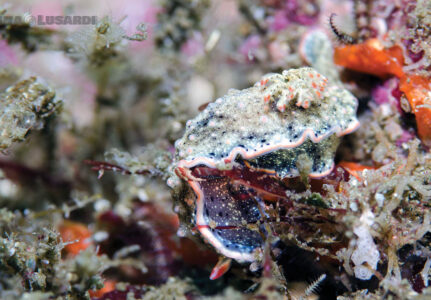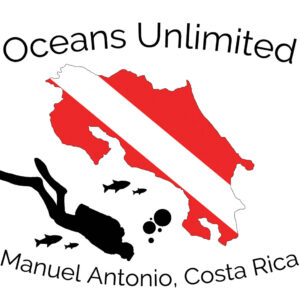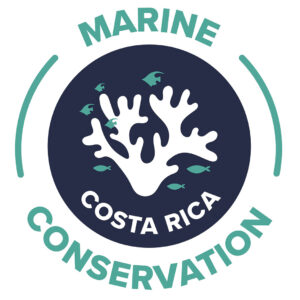All About Nudibranchs
Whilst we may not boast the giants of the Galapagos or Isla del Coco, those of us that dive and snorkel the waters around Manuel Antonio know there is still plenty to see. Sometimes you just have to get down and dirty. For that reason, this month, we are going to have a look at some of our lesser known, but still incredibly beautiful residents, the nudibranchs.

What is a nudibranch I hear you say?
It is a type of slug but not your garden variety, eat your vegetables garden slug. These guys are amazing and we are going to tell you about why they are amazing and an important part of our marine ecosystem.
Nudibranchs live in the ocean all around the planet. Mostly on coral reefs and in seagrass but some do float around in the wide ocean. For a quick bit of biology, they have exposed gills, head tentacles, rhinophores (tentacles that are considered to be organs to smell on the back of their head or neck) and are mainly carnivorous—see you learnt something!
Many of our divers and visitors have never even heard of one, and once you spot them underwater you are enthralled. They vary in size, with the smallest only being about 4mm, and the largest can grow to up to 600mm. Here around the Manuel Antonio National Park, they are on average 100-300mm.
But why are they so amazing?
One of the most beautiful things about them is their color. They are generally brightly colored and stand out when you spot them. They are named very often for these qualities including goddess, splendid, and magnificent.
 The reasons they are so brightly colored is to deter predators, bright color means danger. It makes them beautiful to look at, but these patterns and bright colors are defense and camouflage.
The reasons they are so brightly colored is to deter predators, bright color means danger. It makes them beautiful to look at, but these patterns and bright colors are defense and camouflage.
As soft-bodied organisms, the bright colors can warn predators of the nudibranch’ s chemical defenses, similar to the vibrant coloration of poisonous animals like the poison dart frog.
Nudibranchs typically do not produce their own chemical defenses but obtain them from the things that they eat for food. One of these is underwater Sponges, which often contain either distasteful or poisonous chemicals in their tissues. After eating a sponge, nudibranchs can then recycle and use these chemicals within their own bodies to decrease their taste and stop predators from eating them.
One of the other things that nudibranchs can do is move slowly. For this, they use their bright color as camouflage. They often have the same coloring as the food they are eating, which makes them disguised when they are having a meal.
Why are they important?
You may think that such a small creature does not have an important job in the ecosystem, but like everything, it has its place and role. Nudibranchs have very specialized and varied diets. Because of this, an area with many different species shows us, that there is a large variety of prey. That tells us that the coral reef ecosystem is doing well.
Same thing applies though, if there aren’t many species. The reef isn’t doing as well. This makes them an important indicator of good or bad ocean conditions. By monitoring them, it helps us see the hidden impacts of climate change and different species invasions. Where some of the nudibranch species are associated with specific prey, the loss of a type of nudibranch can show an impact on that prey by a large threat before it takes hold. So, by studying them, it can give us a good picture of what’s happening on the reef and a chance to look at ways to protect and prevent.
So you see, they are small, beautiful and have an important role to the reefs and oceans. Here in Manuel Antonio we are always looking at for them and with our marine conservation program, we will do nudibranch surveys and hunts to see where we can spot them. So, if you want to come see some of the most interesting creatures on our reef, arm yourselves with a magnifying glass and come and dive in.
Want to find out more? @marineconservationcostarica


